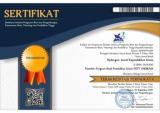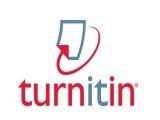Development of Socio-Scientific Issue-Based E-Modules on Addictive Substances to Enhance Students’ Chemical Literacy
Abstract
Chemical literacy is an essential competency that includes understanding chemical concepts, critical thinking skills, and scientific-based decision-making in dealing with relevant social issues. Based on this urgency, this study aims to develop an e-module based on Socioscientific Issues (SSI) on addictive substances as an effort to develop chemical literacy. This study uses the R&D method with the ADDIE (Analyze, Design, Development, Implement, and Evaluation) model up to the Development stage to develop an e-module based on sociosatific issues. The research sample includes two material experts, one media expert, and 15 Chemistry Education students of UIN Sunan Gunung Djati Bandung as respondents for the acceptability test. Data were collected using validation sheets and questionnaires, then analyzed descriptively to determine the validity and feasibility of the e-module. The validation results of two material experts and one media expert showed an average score of the material aspect of 0.90, language 0.89, and appearance 0.87 (very valid). The student feasibility test showed a score of the material aspect of 92.22%, language 89.33%, and appearance 88.22% (very feasible). This e-module is feasible to be used as an innovative and contextual learning media and the basis for further development of the implementation and evaluation stages. This study presents a novelty in the form of an interactive e-module based on socio-scientific issues (SSI) for addictive substances material in Android format (.apk). This e-module is relevant for digital learning and is designed to improve students' chemical literacy by linking chemical concepts to real problems and training critical thinking and science-based decision making.
Keywords
Full Text:
PDFReferences
Afdal, Z., Siwi, M. K., Kurniawati, T., & Marwan. (2021). Development of Mobile Learning Media Based on Articulate Storyline 3 to Support Independence Learning of Vocational High School Students in the New Normal Era. Proceedings of the Seventh Padang International Conference On Economics Education, Economics, Business and Management, Accounting and Entrepreneurship, 192(Piceeba), 206–218. https://doi.org/10.2991/AEBMR.K.211117.059
Ananda, R., Hadiyanto, H., Erita, Y., & Karneli, Y. (2023). Development of Android-Based Interactive Media Articulate Storyline 3 in the Merdeka Curriculum. Jurnal Penelitian Pendidikan IPA, 9(9), 6819–6827. https://doi.org/10.29303/jppipa.v9i9.5393
Astiti, N., Astiti, N. Y., Fadiawati, N., & Tania, L. (2016). E-Book Interaktif Sifat Koligatif Larutan Berbasis Fenomena Kehidupan Sehari-Hari. Jurnal Pendidikan Dan Pembelajaran Kimia, 5(2), 320–333. http://jurnal.fkip.unila.ac.id/index.php/JPK/article/view/15353
Astuti, I. A. D., Sumarni, R. A., & Bhakti, Y. B. (2019). Pengembangan Multimedia Interaktif Berbasis Lectora Inspire sebagai Media Pembelajaran Guru. Abdimas Dewantara, 2(2), 107. https://doi.org/10.30738/ad.v2i2.2872
Dewi, S. R., & Haryanto, H. (2019). Pengembangan multimedia interaktif penjumlahan pada bilangan bulat untuk siswa kelas IV sekolah dasar. Premiere Educandum : Jurnal Pendidikan Dasar Dan Pembelajaran, 9(1), 9. https://doi.org/10.25273/pe.v9i1.3059
Donnellan, J. (2021). Articulate Storyline 360. Computer Assisted Language Learning Electronic Journal (CALL-EJ), 22(3), 251–260.
Faridah, F., & Atakari, E. R. (2018). Hubungan Pola Asuh Orang Tua Dengan Penggunaan Narkotika, Psikotropika Dan Zat Adiktif Lainnya (Napza) Pada Remaja. Jurnal Kebidanan, 8(2), 138. https://doi.org/10.33486/jk.v8i2.61
Helsy, I., Irwansyah, F. S., Herdhani, I. R., & Windayani, N. (2024). Making E-module based on guided inquiry on aldehyde and ketone reaction mechanism. 040002. https://doi.org/10.1063/5.0201972
Irwansyah, F. S., Lubab, I., Farida, I., & Ramdhani, M. A. (2017). Designing Interactive Electronic Module in Chemistry Lessons. Journal of Physics: Conference Series, 895(1). https://doi.org/10.1088/1742-6596/895/1/012009
Klauder, J. R., & Fantoni, R. (2024). The secret to fixing incorrect canonical quantizations. Academia Quantum, 1(1). https://doi.org/10.20935/AcadQuant7349
Laksono, P. J. (2018). Studi Kemampuan Literasi Kimia Mahasiswa Pendidikan Kimia Pada Materi Pengelolaan Limbah. Orbital: Jurnal Pendidikan Kimia, 2(1), 1–12. https://doi.org/10.19109/ojpk.v2i1.2093
Latip, A. (2022). Penerapan Model Addie Dalam Pengembangan Multimedia Pembelajaran Berbasis Literasi Sains. DIKSAINS : Jurnal Ilmiah Pendidikan Sains, 2(2), 102–108. https://doi.org/10.33369/diksains.2.2.102-108
Lestari, K. D., Agustini, K., & Sugihartini, N. (2019). Pengembangan Modul Ajar Storyboard Berbasis Projeck Based Learning untuk Siswa Kelas XI Multimedia di SMK TI Bali Global Singaraja. Kumpulan Artikel Mahasiswa Pendidikan Teknik Informatika (KARMAPATI), 8(2), 309. https://doi.org/10.23887/karmapati.v8i2.18379
Li, J., Zou, B., Yeo, Y. H., Feng, Y., Xie, X., Lee, D. H., Fujii, H., Wu, Y., Kam, L. Y., Ji, F., Li, X., Chien, N., Wei, M., Ogawa, E., Zhao, C., Wu, X., Stave, C. D., Henry, L., Barnett, S., … Nguyen, M. H. (2019). Prevalence, incidence, and outcome of non-alcoholic fatty liver disease in Asia, 1999–2019: a systematic review and meta-analysis. The Lancet Gastroenterology and Hepatology, 4(5), 389–398. https://doi.org/10.1016/S2468-1253(19)30039-1
Marjuni, A., & Harun, H. (2019). Penggunaan Multimedia Online Dalam Pembelajaran. Idaarah: Jurnal Manajemen Pendidikan, 3(2), 194. https://doi.org/10.24252/idaarah.v3i2.10015
Mayer, R. E. (2017). Using multimedia for e‐learning. Journal of Computer Assisted Learning, 33(5), 403–423. https://doi.org/10.1111/jcal.12197
Mersi, J. K., Pradesta, R. Y., Susmarini, D., Fitriyani, A., Kuhu, M., Keperawatan, J., Kesehatan, I.-I., Soedirman, U. J., & Semarang, P. K. (2021). Pengaruh Pemberian Media Kartu Kuartet Terhadap Pengetahuan Tentang Napza Pada Anak Sekolah Dasar. Jurnal Keperawatan Mersi, 2, 49–54.
Muzakkir, M. A., Pomalato, S. W. D., & Katili, M. R. (2022). Efektivitas Multimedia Interaktif Berbasis Smartphone untuk Pembelajaran Matematika dengan Tatap Muka Terbatas. Jambura Journal of Mathematics Education, 3(2), 81–92. https://doi.org/10.34312/jmathedu.v3i2.15605
Ndruru, F. P. S., & Amdayani, S. (2025). Development of e-modules based on socio-scientific issues on Chemistry content. Jurnal Inovasi Dan Teknologi Pembelajaran, 10(2), 129–140. https://doi.org/10.17977/um031v10i22023p129
Nisa, A., Sudarmin, & Samini. (2015). Efektivitas Penggunaan Modul Terintegrasi Etnosains dalam Pembelajaran Berbasis Masalah untuk Meningkatkan Literasi Sains Siswa. Unnes Science Education Journal, 4(3), 1049–1056. http://journal.unnes.ac.id/sju/index.php/usej
Novitasari, R., Waluyo, J., & Nuriman, N. (2022). Chemistry E-Module Based on Socio Scientific Issues (SSI) for Reaction Rate Material to Increase Senior High School Students’ Chemical Literacy. Eduvest - Journal of Universal Studies, 2(9), 1811–1816. https://doi.org/10.59188/eduvest.v2i9.588
Nurhidayat. (2022). View of Membangun Kolaborasi Mahasiswa dengan Peta Konsep dari creately.com. https://proceedings.ums.ac.id/matematika/article/view/249/248
Permana, A. S., Subarkah, C. Z., & Irwansyah, F. S. (2021). Development e-module on The Concept of reduction-oxidation (redox) Oriented Towards Chemical Literacy. 2021 7th International Conference on Wireless and Telematics (ICWT), 1–4. https://doi.org/10.1109/ICWT52862.2021.9678211
Phangestu, C., Subarkah, C. Z., & Helsy, I. (2021). Pembuatan Media Pembelajaran Petualangan Kimia Berorientasi Literasi Kimia pada Materi Zat Aditif. Seminar Nasional Tadris Kimiya 2020, 2, 187–204.
Pratiwi, S. N., Cari, C., & Aminah, N. S. (2019). Pembelajaran IPA Abad 21 dengan Literasi Sains Siswa. Jurnal Materi Dan Pembelajaran Fisika, 9(1), 34–42. https://jurnal.uns.ac.id/jmpf/article/view/31612
Rahayu, S. (2017). Mengoptimalkan aspek literasi pembelajaran kimia abad 21. Prosiding Seminar Nasional Kimia UNY, 21(February), 1–4.
Rasyih, H., Noer, A. M., & Rasmiwetti, R. (2024). Pengembangan E-Modul Berbasis Social Scientific Issue (Ssi) Untuk Meningkatkan Kemampuan Berpikir Kritis Dan Enviromental Care Pada Materi Kimia Hijau Di Kelas X SMA Dengan Menggunakan Aplikasi Fliphtml5. Jurnal Penelitian Pendidikan IPA, 10(8), 6059–6069. https://doi.org/10.29303/jppipa.v10i8.8102
Ricu Sidiq, & Najuah. (2020). Pengembangan E-Modul Interaktif Berbasis Android pada Mata Kuliah Strategi Belajar Mengajar. Jurnal Pendidikan Sejarah, 9(1), 1–14. https://doi.org/10.21009/JPS.091.01
Rosmiati, N. S., Yuliani, A., Nur’Aini, A. S., Nur Fauzi, H. Z., & Nugraha, D. (2022). Media Pembelajaran Podcast pada Mata Pelajaran IPS Memaknai Kemerdekaan untuk Siswa Sekolah Dasar. Jurnal Basicedu, 6(4), 5985–5993. https://doi.org/10.31004/basicedu.v6i4.2945
Ryan, R. M., & Vansteenkiste, M. (2023). Self-Determination Theory. In The Oxford Handbook of Self-Determination Theory (pp. 3–30). Oxford University Press. https://doi.org/10.1093/oxfordhb/9780197600047.013.2
Shakeel, S. I., Al Mamun, M. A., & Haolader, M. F. A. (2023). Instructional design with ADDIE and rapid prototyping for blended learning: validation and its acceptance in the context of TVET Bangladesh. Education and Information Technologies, 28(6), 7601–7630. https://doi.org/10.1007/s10639-022-11471-0
Subarkah, C. Z., Qolbi, A. N., Irwansyah, F. S., Darmalaksana, W., & Mahmud, M. (2018). Developing E-Module Based on Islamic Values. October 2018, 190–194. https://doi.org/10.5220/0007095201900194
Sugiyono. (2018). Metode Penelitian Kuantitatif, Kualitatif dan Kombinasi (Mixed Methods). Alfabeta, 7(1), 120. https://library.bpk.go.id/koleksi/detil/jkpkbpkpp-p-11756
Suratnu, R. (2023). The Adoption of The ADDIE Model in Designing An Instructional Module. IJIET (International Journal of Indonesian Education and Teaching), 7(2), 262–270.
Surbakti, I. W. (2025). Analisis Kualitas Butir Soal Pada Uji Coba Evaluasi Pembelajaran Matematika. Cendekia: Jurnal Ilmu Pengetahuan, 5(1), 116–125. https://doi.org/10.51878/cendekia.v5i1.4097
Syafwan, H., Putri, P., & Mariana, M. (2019). Perancangan Media Pembelajaran Kimia Tentang Struktur Atom Berbasis Multimedia. Prosiding Seminar Nasional Riset Information Science (SENARIS), 1, 1002. https://doi.org/10.30645/senaris.v1i0.110
Talanquer, V. (2015). Threshold Concepts in Chemistry: The Critical Role of Implicit Schemas. https://doi.org/10.1021/ed500679k
Tiara, F., & Sulistina, O. (2021). Development of Pisa 2015 Based Chemical Literacy Assessment Instrument For High School Students. J-PEK (Jurnal Pembelajaran Kimia), 6(1), 26–40. https://doi.org/10.17977/um026v6i12021p026
Widiana, F. H., & Rosy, B. (2021). Pengembangan E-Modul Berbasis Flipbook Maker pada Mata Pelajaran Teknologi Perkantoran. Edukatif : Jurnal Ilmu Pendidikan, 3(6), 3728–3739. https://doi.org/10.31004/edukatif.v3i6.1265
Yolanda, S., Winarni, R., & Yulisetiani, S. (2022). The New Way Improve Learners’ Speaking Skills: Picture and Picture Learning Media Based on Articulate Storyline. Journal of Education Technology, 6(1), 173–181. https://doi.org/10.23887/jet.v6i1.41452
Zeidler, D. L., Herman, B. C., & Sadler, T. D. (2019). New directions in socioscientific issues research. Disciplinary and Interdisciplinary Science Education Research, 1(1), 11. https://doi.org/10.1186/s43031-019-0008-7
DOI: https://doi.org/10.33394/hjkk.v13i3.16419
Refbacks
- There are currently no refbacks.

This work is licensed under a Creative Commons Attribution-ShareAlike 4.0 International License.





